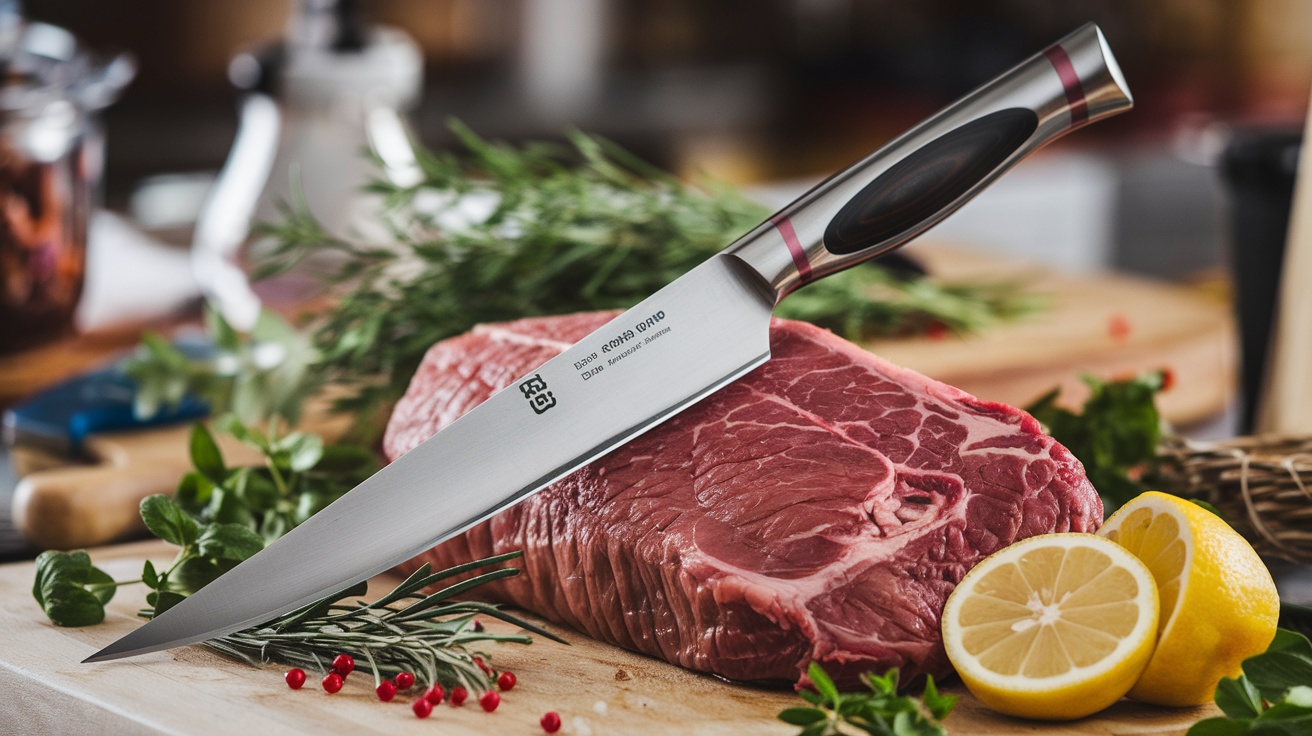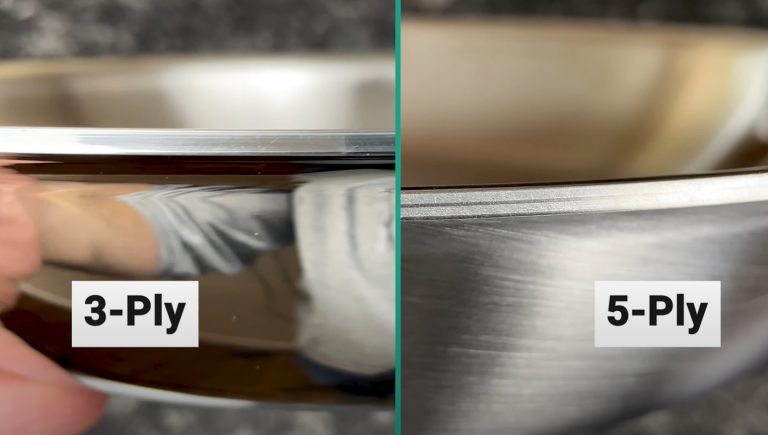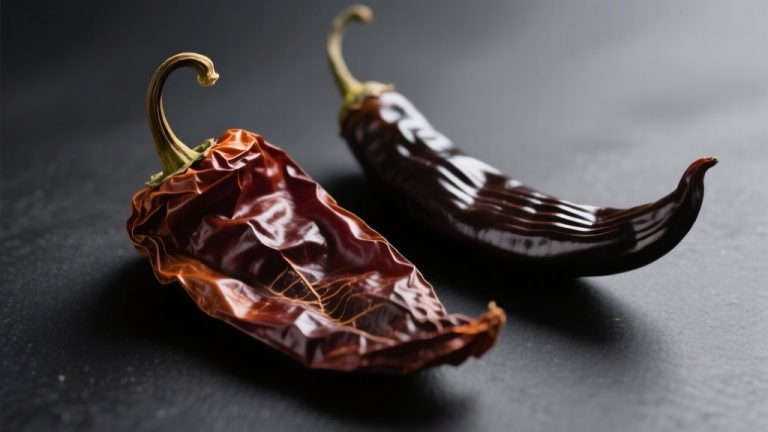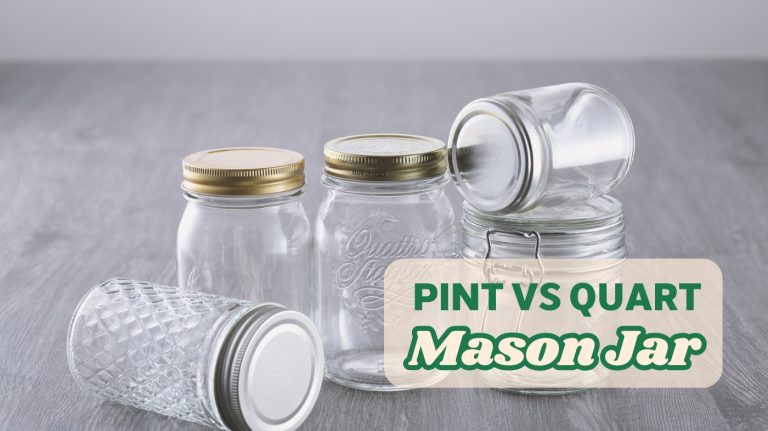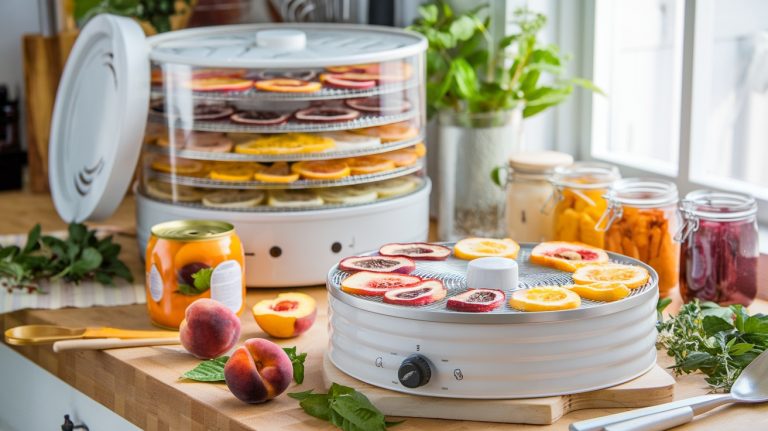What Is a Boning Knife Used For? Understand Its Versatility
A boning knife is your go-to tool for removing bones from meat, poultry, and fish with precision. Its thin, flexible blade allows for detailed cuts, helping you navigate tight spaces between bones and tissues effortlessly.
You can use it for deboning poultry or filleting fish, and it’s also great for trimming sinew from larger meat cuts. Opting for a quality boning knife enhances your control and reduces waste, making meal prep smoother.
With various types available, you’ll find one that suits your needs perfectly. Stick around to discover tips on choosing and maintaining your boning knife for peak performance.
Key Takeaways
- A boning knife is primarily used for removing bones from meat, poultry, and fish.
- It excels in deboning poultry and filleting fish, enhancing meat preparation techniques.
- The knife’s thin, flexible blade allows for intricate cuts and minimizing waste.
- It is effective in trimming sinew and tendons from larger cuts of meat.
- Boning knives are essential for detail work on tough-skinned fruits and vegetables.
Characteristics of Boning Knife
A few essential features make a boning knife perfect for precise kitchen tasks. Here’s a look at what makes a boning knife such an invaluable tool for detailed work:
Blade Design Features
Crafted for precision, the boning knife boasts a thin, semi-flexible blade that typically spans 5 to 7 inches. This design allows you to achieve remarkable precision in cutting and manipulating around bones.
Here are some key blade design features that make boning knives essential tools in your kitchen:
- Thin Blade: The reduced thickness enhances control and finesse during intricate cuts, allowing you to navigate those tight spots with ease.
- Flexible Blade: Depending on your needs, you can choose a more flexible blade for delicate tasks like filleting fish or a rigid blade for tougher meats like beef.
- Tapered Tip: This design feature enables the knife to penetrate and reach into tight spaces between bones and connective tissues, making it easier to separate meat efficiently.
- Curved Tip: The slight upward curve on the cutting edge aids in separating meat from bones and joints without damaging the meat.
Optimal Length Range
When it comes to choosing the right boning knife, understanding the ideal length range is crucial for achieving the best results in your kitchen tasks. The ideal length range for boning knives typically spans from 5 to 7 inches, which allows for precise maneuverability when working around bones.
A 6-inch boning knife strikes a balance between control for detailed work and sufficient length for larger cuts of meat. If you’re deboning larger cuts of meat or poultry, a longer boning knife of around 7 inches can be beneficial, providing extra reach without sacrificing precision.
Conversely, if your focus is on smaller tasks, like filleting fish or trimming delicate cuts of meat, shorter boning knives around 5 inches offer enhanced control and agility.
The flexibility of the blade, combined with the ideal length, ensures effective separation of meat from bone while minimizing waste during preparation.
Common Uses of Boning Knife
Although you might think of a boning knife solely for meat preparation, its versatility extends far beyond that. This handy tool shines in various culinary tasks, making it a must-have in your kitchen.
Here are some common uses of a boning knife:
- Deboning Poultry: It’s primarily used to remove bones, allowing for precise separation of meat from the carcass while minimizing waste.
- Filleting Fish: The flexibility and pointed tip make it ideal for filleting fish, providing clean and even cuts that preserve more flesh compared to wider blades.
- Trimming Sinew and Tendons: You can easily trim sinew and tendons from larger cuts of meat, enhancing the overall presentation and texture of your dishes.
- Detail Work on Fruits and Vegetables: With its sharp edge, a boning knife is excellent for peeling and sectioning tough-skinned fruits and vegetables, allowing for intricate cuts and decorative presentations.
Techniques for Using a Boning Knife
Using a boning knife effectively requires mastering a few techniques for safe and precise cuts. Below are some key methods to help you handle the knife with confidence and achieve professional-level results in your kitchen:
Proper Grip Techniques
Using a boning knife effectively hinges on mastering proper grip techniques. The right grip not only enhances your control but also minimizes hand fatigue during extended use. Here are some essential techniques to reflect upon:
- Pinch Grip: This grip involves pinching the blade between your thumb and index finger, while your other fingers wrap around the handle. It provides greater stability and control, especially for intricate work.
- Full Grip: For tougher cuts of meat, switch to a full grip. This technique gives you better leverage, ensuring a secure hold during the deboning process.
- Blade Angle: Maintaining a horizontal blade angle is vital when filleting or skinning fish. It allows for smooth, precise cuts that follow the fish’s contours.
- Long Strokes: When working around bones, employ long, smooth strokes. This approach minimizes waste and enhances accuracy, making your work more efficient.
Efficient Cutting Motions
Mastering grip techniques sets the foundation for efficient cutting motions with a boning knife. When you’re ready to remove meat from bones, use long, smooth strokes. This approach maintains precision and minimizes waste, guaranteeing you get the most from your cuts.
For filleting fish, angle the blade horizontally to glide along the spine, which allows for clean, even cuts without tearing the flesh. Control and stability are vital, so adopt a pinch grip for intricate maneuvers around joints. This grip enhances your ability to navigate delicate areas.
If you’re working with larger cuts, switch to a full grip for added leverage. Incorporate a gentle rocking motion when using your boning knife; this technique boosts maneuverability, making it easier to separate meat from bones effectively.
Maintenance and Care Tips for a Boning Knife
A well-maintained boning knife is essential for achieving peak performance in the kitchen. To guarantee your knife remains efficient, follow these maintenance and care tips:
| Task | Frequency | Tips |
|---|---|---|
| Hand wash your knife | After each use | Use warm, soapy water; avoid the dishwasher. |
| Knife sharpening | Every few months | Use a whetstone or a professional service for ideal sharpness. |
| Inspect your knife | Monthly | Check for dullness, damage, or rust; address issues immediately. |
| Store your knife | Daily | Keep in a knife block or sheath to prevent nicks and maintain sharpness. |
| Use a cutting board | Always | Opt for a wooden board to preserve the blade’s sharp tip. |
It’s essential to keep your boning knife in top shape. Regularly sharpening your knife can make a significant difference in preparation time.
Frequently Asked Questions
What Is the Best Use of a Boning Knife?
When you’re in the kitchen, a boning knife is like your trusty sidekick, ready to tackle the toughest tasks.
Its best use lies in expertly separating meat from bone, allowing you to make precise cuts around joints. You can confidently debone chicken thighs or fillet fish, maximizing yield.
Plus, it’s great for trimming sinew and fat, giving your dishes a clean finish.
This knife’s versatility also lets you handle tougher-skinned fruits and vegetables with ease.
Do I Really Need a Boning Knife?
You might wonder if you really need a boning knife in your kitchen.
While it’s not absolutely essential, having one can elevate your cooking game. Its flexibility and precision make it easier to handle intricate cuts and remove bones cleanly, which saves you time and reduces waste.
If you enjoy preparing meat, investing in a good boning knife can enhance your skills and improve the quality of your dishes considerably.
What Foods Do You Cut With a Boning Knife?
When you use a boning knife, you’ll find it perfect for cutting various foods. You can easily debone poultry like chicken or turkey, trim sinew from larger cuts of meat, and fillet fish with precision.
It’s also handy for peeling tough-skinned fruits like pineapples and melons, giving you elegant slices. Plus, you can tackle intricate vegetable work, creating detailed cuts and garnishes that elevate your dishes.
What’s the Difference Between a Boning Knife and a Fillet Knife?
When you compare a boning knife to a fillet knife, you’ll notice key differences in design and purpose.
A boning knife has a thicker, rigid blade, perfect for cutting through meat and sinew, while a fillet knife features a thinner, more flexible blade, ideal for skinning fish.
The boning knife’s straight edge allows for precise cuts around bones, whereas the fillet knife’s curve helps you glide along the fish’s spine effortlessly.
Elevate Your Cutting Skills with a Quality Boning Knife
To sum up, a boning knife is an essential tool for any home cook or professional chef, making meat preparation easier and more precise. Did you know that using the right knife can reduce prep time by up to 30%?
With its unique design and flexibility, the boning knife excels at separating meat from bone while minimizing waste. By investing in a quality boning knife and mastering its use, you’ll elevate your culinary skills and enjoy delicious results every time.

